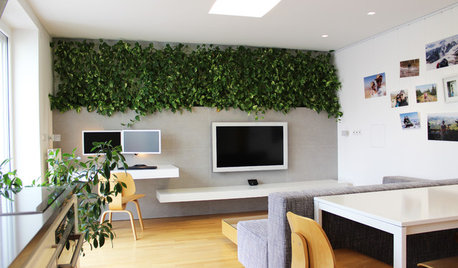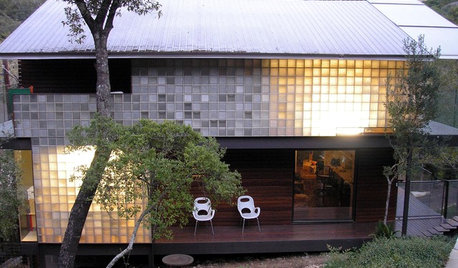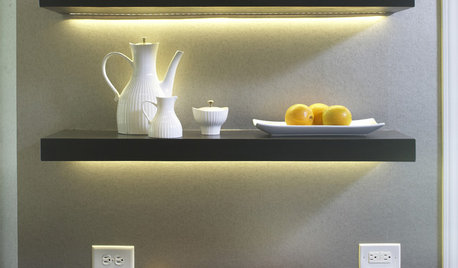Any thoughts about this new LED grow light?
ccc1
16 years ago
Related Stories

LIGHTINGWhat to Know About Switching to LED Lightbulbs
If you’ve been thinking about changing over to LEDs but aren't sure how to do it and which to buy, this story is for you
Full Story
HOUZZ TOURSMy Houzz: LEDs and a Living Wall Color a Minimalist Slovakian Home
Thanks to a modern overhaul, this small Central European apartment is now a testament to efficiency and thoughtful design
Full Story
REMODELING GUIDESGreat Material: Glass Block Grows Up
See how designers are using the humble glass block for privacy, pattern and light
Full Story
KITCHEN DESIGN12 Ways to Light Your Kitchen With LEDs
See how to use new energy-saving lights to illuminate your kitchen, light a countertop and add style, too
Full Story
LIGHTINGThe Lowdown on High-Efficiency LED Lighting
Learn about LED tapes, ropes, pucks and more to create a flexible and energy-efficient lighting design that looks great
Full Story
HOUSEPLANTSHow to Grow Orchids Indoors
Orchids are the exotic aristocrats of the flower world and can make themselves comfortable in almost any home
Full Story
EDIBLE GARDENSHow to Grow Your Own Sweet Summer Crops
This guide will help any gardener get started on growing the freshest warm-season veggies and berries for summer
Full Story
SUMMER GARDENINGHow to Grow Basil
Bright color, quick growth and endless uses for cooking make this summer annual a winner in the garden or a pot
Full Story
MOST POPULARSummer Crops: How to Grow Sunflowers
Savor snack-tastic sunflower seeds once the radiant blooms have faded — if the birds have saved you any, that is
Full Story
GARDENING GUIDESWhat Kind of Roses Should You Grow?
Want to add the beauty of roses to your garden? Find out which ones, from old-fashioned to modern, are right for you
Full Story





lermer
ccc1Original Author
Related Professionals
Holly Springs Landscape Architects & Landscape Designers · West Milford Landscape Architects & Landscape Designers · Kyle Landscape Architects & Landscape Designers · Owings Mills Landscape Architects & Landscape Designers · Alexandria Landscape Contractors · Biloxi Landscape Contractors · Cliffside Park Landscape Contractors · Rosemount Landscape Contractors · Centennial Fence Contractors · Kuna Fence Contractors · The Villages Fence Contractors · Zion Fence Contractors · Goleta Fence Contractors · Burlington Roofing & Gutters · Orlando Roofing & Gutterslermer
shrubs_n_bulbs
dcarch7 d c f l a s h 7 @ y a h o o . c o m
shrubs_n_bulbs
ledaero
dcarch7 d c f l a s h 7 @ y a h o o . c o m
ledaero
dcarch7 d c f l a s h 7 @ y a h o o . c o m
ledaero
dcarch7 d c f l a s h 7 @ y a h o o . c o m
shrubs_n_bulbs
dcarch7 d c f l a s h 7 @ y a h o o . c o m
inlovewithleds
taz6122
bunnyman
kchorticulture
mothorchid
mothorchid
mothorchid
mothorchid
mothorchid
mothorchid
mothorchid
deuce70